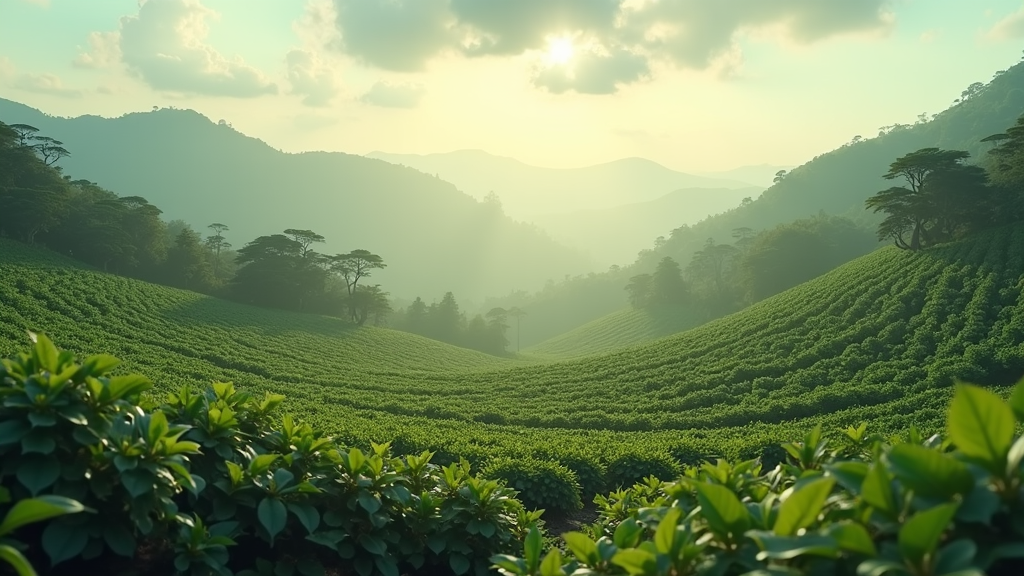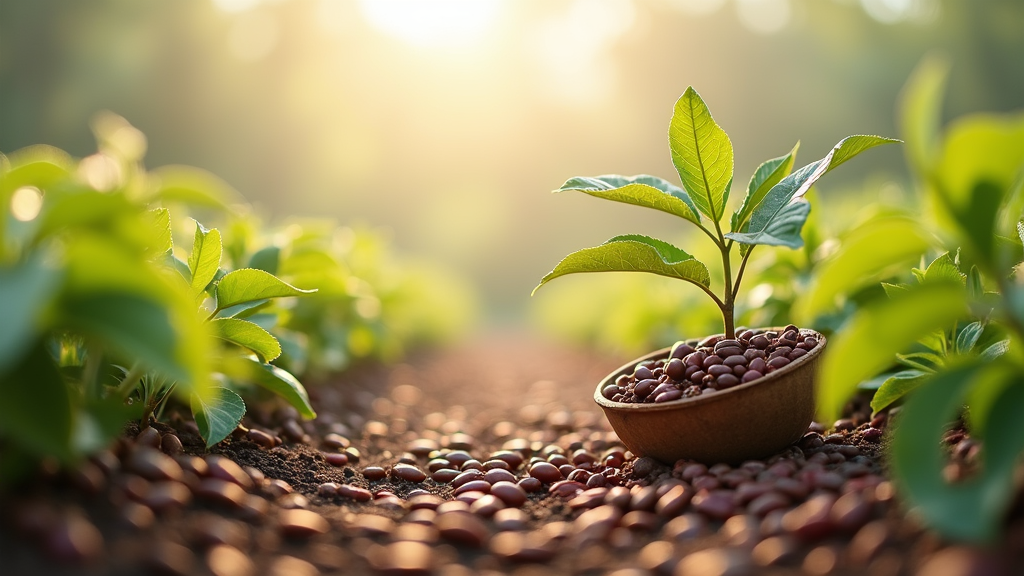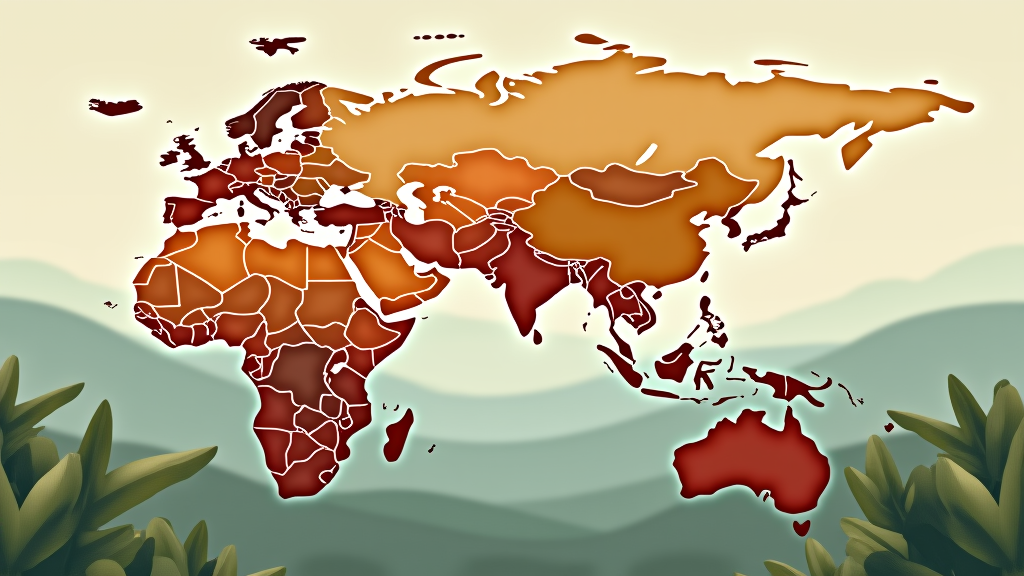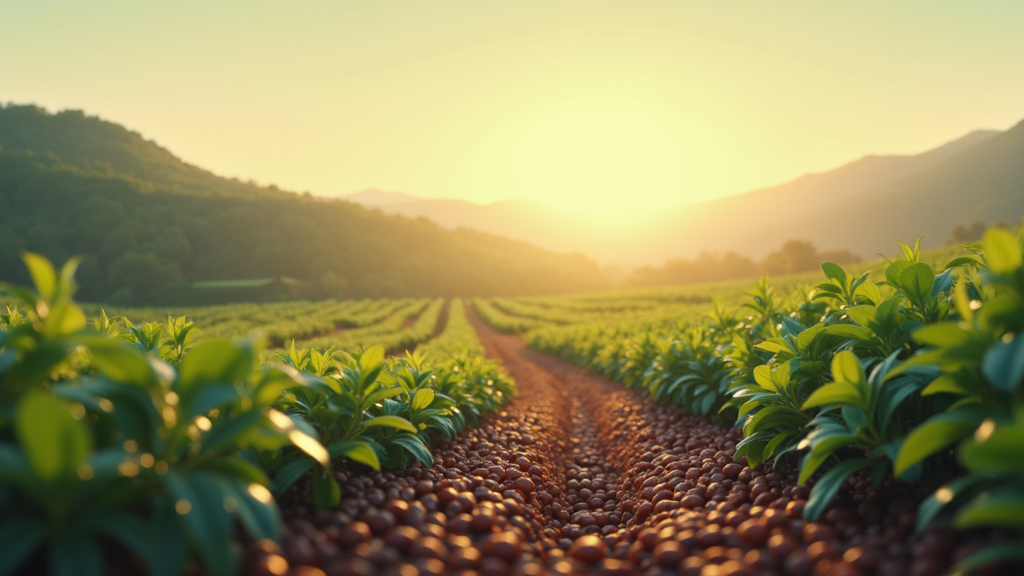Table of Contents
- Exploring Where is Coffee Grown in the World
- Understanding: Where is Coffee Grown Globally?
- Fundamental Concepts: Defining Coffee Cultivation Terroir
- Core Principles: Climate and Soil for Coffee Growth
- Essential Components: Ideal Climate for Coffee Cultivation
- Key Features: Altitude and Shade in Coffee Farming
- Secondary Aspects: Processing & Harvesting Coffee Beans
- Important Variations: Microclimates and Coffee Varietals
- Detailed Guide: Where is Coffee Grown Worldwide
- Latin America: Coffee Growing Regions Explained
- Brazil: Largest Coffee Producer Globally Described
- Colombia: Renowned Arabica Coffee Growing Areas
- Honduras: Leading Central American Coffee Production
- Peru: Rising Star in Specialty Arabica Coffee
- Mexico: High-Quality Arabica Coffee Bean Origins
- Guatemala: Diverse Arabica Coffee Flavors Detailed
- Costa Rica: Arabica Acidity and Fruity Undertones
- Asia: Key Coffee Production Regions and Volume
- Other Regions: Unique Coffee Growing Origins
- Understanding Where is Coffee Grown in the World: Key Takeaways
Exploring Where is Coffee Grown in the World

Global Coffee Cultivation: Overview and Importance
Coffee is grown in many regions around the world, each imbuing the beans with distinctive flavors and characteristics. Understanding these origins is key to appreciating the nuances of different brews and making informed purchasing decisions.
Key Statistics:
- Global coffee production: Approximately 10 million metric tons annually.
- Global coffee market value: Estimated at over $400 billion.
Historical Origins and Spread of Coffee Cultivation
The story of coffee begins in Ethiopia, from where its cultivation spread across the globe via intricate trade routes. Today, we see a growing emphasis on sustainable farming practices and the rise of specialty coffee markets, marking significant developments in the industry.
Understanding Coffee Growing Regions: What You’ll Learn
This guide will delve into the core concepts of coffee cultivation, including the geographical parameters of the Coffea Belt and the fundamental differences between Arabica and Robusta beans. You’ll gain the practical knowledge to identify regional coffee characteristics and select coffees based on their origin.
Core Concepts:
- Coffea Belt: Regions between the Tropics of Cancer and Capricorn suitable for coffee growth.
- Arabica vs. Robusta: Key differences in flavor, caffeine content, and growing conditions.
Practical Applications:
- Identifying regional coffee characteristics.
- Making informed coffee selections based on origin.
Understanding: Where is Coffee Grown Globally?
Fundamental Concepts: Defining Coffee Cultivation Terroir
When discussing where is coffee grown globally, understanding a few fundamental concepts is crucial. Two key definitions are essential: terroir and altitude. Terroir refers to the complete set of environmental factors that affect a crop’s characteristics, including soil, climate, and topography. Altitude, or elevation above sea level, significantly impacts coffee bean density and flavor; higher altitudes often yield denser, more complex beans.
Core Principles: Climate and Soil for Coffee Growth
The core principles that determine where coffee is grown hinge on climate and soil composition. Climate, encompassing temperature, rainfall, and sunlight, plays a vital role in coffee quality. Coffee thrives in specific climate conditions. Additionally, soil composition is critical; nutrient-rich volcanic soils are particularly ideal for coffee growth, providing the necessary minerals and drainage.
Essential Components: Ideal Climate for Coffee Cultivation
Several essential components define regions where is coffee grown. Coffee plants require consistent temperatures between 15-24°C (59-75°F) and an annual rainfall of 1500-2500 mm (59-98 inches). Well-drained soil with a pH of 5.5 to 6.5 is also crucial for optimal growth. These factors collectively create the ideal environment for coffee cultivation.
Key Features: Altitude and Shade in Coffee Farming
When assessing where is coffee grown, key features to consider include both primary and secondary aspects. As a primary aspect, higher altitudes (1200-2200m) generally yield denser, more flavorful Arabica beans. Providing shade is also essential, helping to regulate temperature and protect the plants from excessive sunlight. These primary elements significantly impact coffee quality.
Secondary Aspects: Processing & Harvesting Coffee Beans
Secondary aspects influencing where is coffee grown involve processing methods and harvesting techniques. Washed, natural, and honey processes each impart distinct flavor profiles to the coffee beans. Selective picking, which ensures only ripe cherries are harvested, is another crucial technique. These secondary aspects refine the final product and highlight regional differences.
Important Variations: Microclimates and Coffee Varietals
Important variations in coffee-growing regions include microclimates and varietals. Microclimates, or unique local conditions within regions, significantly affect coffee characteristics, creating diverse flavor profiles. Different coffee bean varietals, such as Geisha and Bourbon, offer distinct flavors and contribute to the complexity of where is coffee grown. Understanding these variations is key to appreciating the nuances of global coffee production.
Detailed Guide: Where is Coffee Grown Worldwide

Africa: Coffee Regions and Flavor Profiles
Africa is the birthplace of coffee, offering a diverse range of flavors and growing regions that contribute significantly to the global coffee supply.
Ethiopia: The Birthplace of Coffee Cultivation
Ethiopia is renowned as the origin of coffee, celebrated for its diverse traditional varieties. Key regions include:
- Sidamo: Known for citrusy and flavorful beans grown at altitudes of 1,500-2,200 meters.
- Yirgacheffe: Famous for fruity, tea-like qualities, cultivated at 1,800-2,000 meters.
- Harrar: Delivers bold, wine-like characteristics, grown at 1,400-2,000 meters.
Kenya: High-Quality Arabica Coffee Production
Kenya is famous for its highly regarded Arabica coffee. Key characteristics include bright acidity and flavors with hints of black currant and wine-like notes. A notable region produces the premium grade Kenya AA.
Uganda: Emerging Robusta and Arabica Coffee Strength
Uganda is an emerging force in both Robusta and Arabica production. Key regions include:
- Central Region: Produces robust flavor, particularly in the Lake Victoria Crescent.
- Western Region: Offers a fruity, chocolatey blend of Robusta and Arabica.
- Eastern Region: Characterized by bright, citrusy, and floral Arabica.
Rwanda: High-Altitude Arabica Coffee Excellence
Rwanda is known for its high-quality Arabica coffee, distinguished by complex flavors developed at high altitudes.
Tanzania: Balanced Arabica and Robusta Flavor Notes
Tanzania produces both Arabica and Robusta, with a balanced flavor profile often featuring chocolatey notes.
Latin America: Coffee Growing Regions Explained
Brazil: Largest Coffee Producer Globally Described
Brazil stands as the largest producer of coffee in the world. Key regions include:
- Minas Gerais: Known for smooth, nutty Arabica beans.
- São Paulo: Produces a significant volume of commercial-grade coffee.
- Espírito Santo: Primarily produces Robusta.
Brazil’s production volume is approximately 2.68 million metric tons annually.
Colombia: Renowned Arabica Coffee Growing Areas
Colombia is renowned for its high-quality Arabica coffee. Key regions include:
- Antioquia: Known for balanced, fruity flavors.
- Huila: Produces complex, aromatic coffees.
- Coffee Triangle (Caldas, Quindío, Risaralda): Consistent quality with mild flavors.
Colombia’s production volume is approximately 750,000 metric tons annually.
Honduras: Leading Central American Coffee Production
Honduras is a leading coffee producer in Central America. Key regions include:
- Copán: Known for fruity, chocolatey notes.
- Montecillos: Characterized by sweet, citrusy flavors.
- Opalaca: Offers complex, fruity profiles.
Honduras’s production volume is approximately 475,000 metric tons annually.
Peru: Rising Star in Specialty Arabica Coffee
Peru is a rising star in specialty Arabica coffee. Key regions include:
- Chanchamayo: Known for bright, fruity, and floral notes.
- Amazonas: Offers clean, citrusy, and sweet flavors.
- San Martin: Characterized by nutty, chocolatey profiles.
Peru’s production volume is approximately 340,000 metric tons annually.
Mexico: High-Quality Arabica Coffee Bean Origins
Mexico is known for its high-quality Arabica coffee. Key regions include:
- Chiapas: Known for fruity, floral characteristics.
- Veracruz: Offers rich, nutty flavors.
- Oaxaca: Characterized by chocolatey, spicy, and organic beans.
Mexico’s production volume is approximately 245,000 metric tons annually.
Guatemala: Diverse Arabica Coffee Flavors Detailed
Guatemala is known for its high-quality Arabica coffee, featuring diverse flavors, often with chocolatey and spicy notes. Its production volume is approximately 245,000 metric tons annually.
Costa Rica: Arabica Acidity and Fruity Undertones
Costa Rica is known for bright acidity and fruity undertones in its high-quality Arabica coffee, often with clean, crisp flavors.
Asia: Key Coffee Production Regions and Volume

Vietnam: Largest Robusta Coffee Producer Worldwide
Vietnam is the largest producer of Robusta coffee worldwide. Key regions include:
- The Central Highlands (Đắk Lắk, Gia Lai, Kon Tum): Primary Robusta production area.
- Lam Dong: Focuses on Arabica production.
Vietnam’s production volume exceeds 1.5 million metric tons annually, producing 40% of the world’s Robusta beans.
Indonesia: Robusta and Arabica Coffee Varieties
Indonesia is known for both Robusta and unique Arabica beans. Key regions include:
- Sumatra: Offers smooth, earthy, and spicy profiles.
- Java: Known for strong, flavorful Arabica.
- Sulawesi: Characterized by clean, nutty, and spicy notes.
Indonesia’s production volume is approximately 670,000 metric tons annually.
India: Southern States’ Coffee Growing Regions
Coffee in India is predominantly grown in the southern states. Key regions include:
- Karnataka: Accounts for the majority of production, including Monsooned Malabar.
- Kerala: Features shade-grown coffee with nutty, earthy notes.
- Tamil Nadu: Produces high-altitude Arabica with mild, sweet flavors.
India’s production volume is approximately 230,000 metric tons annually, with an almost even split between Arabica and Robusta.
Thailand: Northern Regions’ Mild Coffee Production
Thailand primarily grows coffee in the northern regions, particularly in Chiang Mai, known for mild, sweet coffee.
Other Regions: Unique Coffee Growing Origins
Hawaii (United States): Kona Coffee Growing Details
Hawaii, part of the United States, is known for Kona Coffee, a famous Arabica variety. It is characterized by smoothness and delicate flavor, grown on volcanic slopes in the Kona district.
Jamaica: Blue Mountain Coffee Characteristics Described
Jamaica is home to Blue Mountain coffee, known for its mild flavor and lack of bitterness. It is a high-quality Arabica grown at high altitudes.
Understanding Where is Coffee Grown in the World: Key Takeaways

Recap of Major Coffee-Growing Regions’ Characteristics
We’ve journeyed through the world’s coffee belt, from the lush highlands of Latin America to the volcanic slopes of Southeast Asia and the fertile lands of Africa. Each region imparts unique characteristics to its beans, influenced by altitude, climate, soil composition, and processing methods. Latin American coffees often boast bright acidity and balanced flavors, while Asian coffees tend to be earthy and full-bodied. African coffees are celebrated for their complex fruit and floral notes.
Future Trends in Coffee-Growing Regions Globally
The coffee industry is constantly evolving. Emerging regions like China and Vietnam are increasing their production and experimenting with new varieties and processing techniques. Furthermore, there’s a growing emphasis on sustainable practices, including shade-grown coffee, organic farming, and fair trade initiatives, aimed at protecting the environment and supporting coffee farmers’ livelihoods.
Resources for Further Coffee Exploration Worldwide
To deepen your understanding of coffee origins and the global coffee industry, explore these resources:
- Specialty Coffee Association (SCA): A wealth of information on coffee standards, education, and events.
- World Coffee Research (WCR): Conducting research to improve coffee production and sustainability.
- Fairtrade International: Learn about fair trade practices and certified coffee producers.
These organizations offer valuable insights into the complexities of coffee cultivation and the ongoing efforts to ensure a sustainable and equitable future for the coffee industry.

